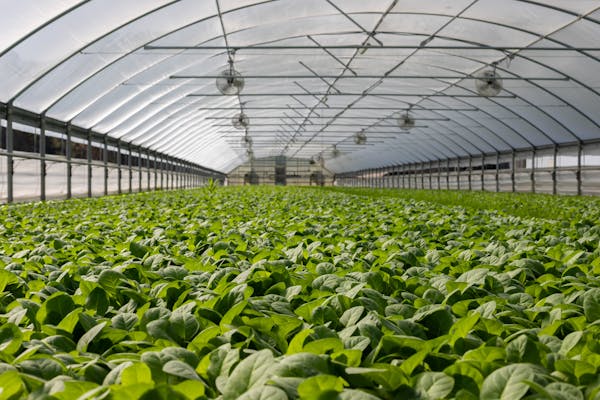Top 9 Trade Secret in Future of Food and Agriculture
Table of Contents
Introduction to the New Innovations in the Future of Food and Agriculture
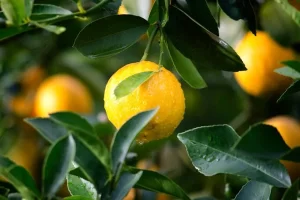
In today’s rapidly changing world, the future of food and agriculture innovation plays a crucial role in addressing the challenges facing the food and agriculture sector. From ensuring food security to promoting sustainability and resilience, new technologies and practices are transforming the way we produce, distribute, and consume food.
The Main Elements Which are Used in the Future of Food and Agriculture
1. Vertical Farming: Cultivating the Future of Agriculture
Vertical farming is revolutionizing agriculture by allowing crops to be grown indoors in stacked layers, using controlled environments and efficient LED lighting. This innovative approach maximizes space utilization and reduces water consumption, making it particularly well-suited for urban environments where land availability is limited. Examples like Aero Farms and Plenty demonstrate the potential of vertical farming to increase crop yields and provide fresh, locally-grown produce year-round.
2. Precision Agriculture: Harnessing Data for Sustainable Farming
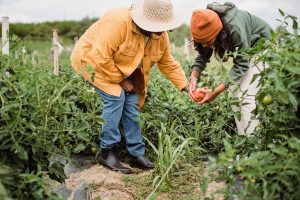
Precision agriculture leverages advanced technologies such as GPS, drones, and sensors to collect and analyze data, enabling farmers to make more informed decisions about crop management. By precisely targeting inputs such as water, fertilizers, and pesticides, precision agriculture optimizes resource usage, reduces environmental impact, and improves crop yields. Case studies from farms adopting precision agriculture techniques showcase significant improvements in productivity, cost-effectiveness, and sustainability.
3. Alternative Protein Sources: Redefining the Protein Landscape
The rise of alternative protein sources, food and agriculture including plant-based proteins, cultured meat, and insect-based proteins, presents a promising solution to the environmental and ethical challenges associated with traditional animal agriculture. Companies like Beyond Meat and Impossible Foods are leading the way in creating delicious and sustainable plant-based meat alternatives that appeal to consumers and reduce the carbon footprint of food production. Innovations in cultured meat and insect farming offer further opportunities to meet global protein demand while minimizing environmental impact.
4. Blockchain in Supply Chain: Ensuring Transparency and Traceability
Blockchain technology is transforming the agricultural supply chain by providing a transparent and immutable record of transactions, from farm to fork. By enabling traceability and accountability, blockchain enhances food safety, reduces fraud, and builds consumer trust. Initiatives such as IBM’s Food Trust platform and the World Food Programmer Building Blocks project demonstrate how blockchain is being used to track the journey of food products, verify certifications, and empower consumers to make informed choices about their food purchases.
5. Soil Health Management: Nurturing the Foundation of Agriculture
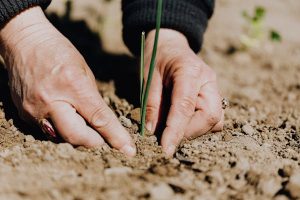
Soil health management practices, including conservation tillage, cover cropping, and organic amendments, are essential for maintaining soil fertility and resilience in the face of climate change. By promoting soil biodiversity, enhancing water retention, and sequestering carbon, these practices improve crop yields, reduce erosion, and mitigate the impacts of extreme weather events. Farmer-led initiatives and government programs promoting soil health demonstrate the importance of prioritizing soil conservation for sustainable agriculture.
6. Smart Farming Equipment: Transforming Farm Operations
Smart farming equipment, equipped with IoT sensors for food and agriculture, GPS guidance systems, and autonomous capabilities, is revolutionizing farm operations by optimizing efficiency and reducing labor costs. From automated tractors to drone-based crop monitoring systems, these technologies enable farmers to manage their fields more precisely, identify issues early, and respond proactively to changing conditions. Success stories from farms adopting smart farming technologies underscore the potential for increased productivity and profitability while minimizing environmental impact.
7. Food Waste Reduction: A Path to Sustainability
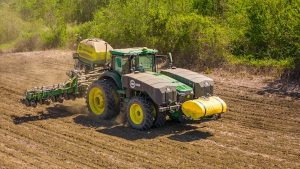
Food waste reduction is a critical challenge facing the future of food and agriculture sector, with significant economic, environmental, and social implications. Innovative solutions such as surplus food redistribution platforms, composting initiatives, and sustainable packaging innovations are helping to minimize food waste at every stage of the supply chain. By raising awareness, changing consumer behaviors, and implementing systemic changes, stakeholders across the food system can work together to create a more sustainable and equitable food system for future generations.
8. Aquaponics: Harmonizing Aquaculture and Hydroponics
Aquaponics is a sustainable farming method that combines aquaculture with hydroponics (growing plants in water). Food and agriculture, this closed-loop system allows fish waste to provide nutrients for plants, while the plants filter and clean the water for the fish. Aquaponics offers efficient water usage, space-saving benefits, and the ability to grow both fish and vegetables in the same system.
9. AI and Machine Learning in Crop Management
Artificial intelligence (AI) and machine learning algorithms are being utilized to analyze vast amounts of agricultural data, including weather patterns, soil composition, and crop health indicators. By processing this data, AI can provide real-time insights and predictive analytics to help farmers make data-driven decisions about planting, irrigation, pest control, and harvest timing, optimizing crop yields and resource usage.

